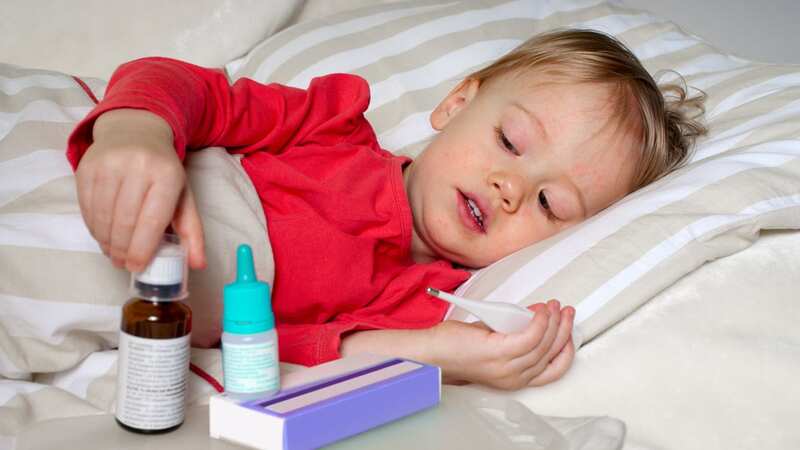Parents told of scarlet fever symptoms they need to know after 28,500 cases

Parents have been told of crucial scarlet fever symptoms they must watch out for with 28,500 cases already reported this year.
Data earlier this year showed cases are eight times higher than the last big infectious season back in 2017. In 2022 there were 16,000 cases by Septrmber with a sudden huge surge towards the end of the year and mums and dads have now been told to be on their guard.
Between 19 September 2022 and 8 January this year, 37,068 notifications of scarlet fever were recorded. There were 190 deaths across all age groups in England, including 30 children under 18. There are some important indicators medics want you to look out for.
 One symptom of scarlet fever is 'strawberry tongue' (Shutterstock / Chalie Chulapornsiri)
One symptom of scarlet fever is 'strawberry tongue' (Shutterstock / Chalie Chulapornsiri)According to the NHS, some of the first signs of scarlet fever can be similar to flu-like symptoms. This including a high temperature, a sore throat and swollen neck glands - a large lump on the side of your neck. A rash appears 12 to 48 hours later. It looks like small, raised bumps and starts on the chest and tummy, then spreads. The rash makes your skin feel rough, like sandpaper.
On white skin the rash looks pink or red. On brown and black skin it might be harder to see a change in colour, but you can still feel the rash and see the raised bumps. Anyone who has the symptoms, or who has a child with the symptoms, is urged to see a GP.
 Cherished girl, 3, who spent half her life in hospital dies before surgery
Cherished girl, 3, who spent half her life in hospital dies before surgery
Scarlet fever is highly infectious and while it can be treated with antibiotics, it can be dangerous if not dealt with. The surge in scarlet fever last year was linked to an increase in Group A Streptococcal infections - which cause scarlet fever as well as impetigo tonsillitis and other conditions.
During last year's outbreak, Dr Colin Brown, Incident Director at UKHSA, said: "Wash your hands regularly and thoroughly, catch coughs and sneezes in a tissue, and keep your home well ventilated. If you are unwell with any infection, you should avoid visiting vulnerable people, and stay away from school, nursery or work if you are unwell with a fever. Please contact NHS 111 or your GP if you suspect you or your child have scarlet fever – with symptoms such as fever, sore throat, difficulty swallowing and a sandpapery rash.
Do you need to see a doctor for scarlet fever?
While scarlet fever is usually only a mild illness, treatment is still advised and you should speak to a GP if you think that you or your child may have contracted it. Dr David Cromie, Consultant in Health Protection at the PHA, told BelfastLive: “Scarlet fever is contagious but not usually serious. Early treatment with antibiotics reduces the risk of complications and spread to others.
“Scarlet fever usually clears up after about a week, but anyone who thinks they or a child may have it should contact a GP for a diagnosis and appropriate treatment. It is important to take antibiotics as instructed by your GP, to minimise the risk of complications."
When the NHS recommends contacting a GP
- Have symptoms of scarlet fever
- Haven't gotten better within a week of seeing a GP
- Have chickenpox and scarlet fever at the same time
- Become ill again – this can be a sign of complication such as rheumatic fever
- Have scarlet fever symptoms
- Are feeling unwell after being in contact with someone who has scarlet fever
Because the infection is highly contagious, you should phone your GP before you go in to see them.
Read more similar news:
Comments:
comments powered by Disqus

































